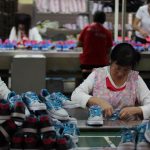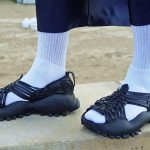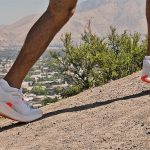Amid rounds of previously announced layoffs, Nike’s employee headcount at its Beaverton, OR headquarters dropped by 6.1 percent to 10,700 at the close of the company’s fiscal year ended May 31, according to its recently released annual report.
After announcing a cost-savings plan in December 2023, Nike announced in February 2024 that it would lay off 2 percent of its workforce, representing over 1,600 employees, due to a sales slowdown. CEO John Donahoe wrote in an internal e-mail at the time, “We are not currently performing at our best, and I ultimately hold myself and my leadership team accountable.”
The e-mail noted that cutbacks would not affect store employees or distribution center workers. Nike indicated it would redirect its resources toward investing in its most important categories and growth opportunities, including running, women’s and Jordan brand.
In the company’s fiscal third quarter ended February 28, Nike absorbed a pre-tax charge of $443 million related to its cost-cutting plan, primarily associated with employee severance costs and accelerated stock-based compensation expense. Nike aims to cut up to $2 billion in costs over the next three years, with the savings reinvested to drive growth, innovation and profitability.
In reporting fiscal fourth-quarter results on July 27, Nike reduced its sales forecast for its current fiscal year ended May 31, 2025, now expecting a decline in the mid-single-digits, including a high-single-digit drop in the first half.
Nike’s employee headcount at its Beaverton, OR campus at the close of fiscal 2023 was approximately 11,400 employees. Beaverton’s employee count peaked at approximately 12,800 employees in fiscal year 2020. A decade age in fiscal year 2014, Beaverton’s employee account was listed as “more than 8,500 employees.”
The fiscal 2024 10-K shows Nike’s overall worldwide employee count, which includes retail, warehouse and part-time workers, fell 5.1 percent to about 79,400 employees from approximately 83,700 at the same time a year ago.
In a note, Jonathan Komp, an analyst at Baird, noted that Nike’s overall workforce cut was the largest annual percentage reduction since FY19. “NKE’s revenue and EBIT per employee remain well above F2019 levels, suggesting other pressures/inefficiencies have weighed on profitability,” said Komp.
Komp also noted that the higher-than-6 percent corporate headcount reduction was likewise seen at Adidas, Under Armour and Puma over the past four years and compares to the 260 percent corporate hiring hike at On Holding, “highlighting a challenge as new brands attract talent.”
Jim Duffy, managing director at Stifel, wrote in a note that the 10-K “reveals a shift in expense towards endorsement commitments and away from employee headcount, suggesting an emphasis on amplifying marketing.”
According to Nike’s 10-K, endorsement contract obligations due within one year surged 31 percent year-over-year to $1.7 billion from $1.4 billion last year. The near-term endorsement spend, which represents approximate amounts of base compensation and minimum guaranteed royalty fees Nike is obligated to pay athlete, public figure, sport team and league endorsers of the brand’s products, increased to 3.3 percent of revenue versus 2.5 percent in fiscal 2023.
Nike’s World Headquarters, owned by Nike and located near Beaverton, spans approximately 400 acres and consists of over 40 buildings. Overseas, Nike leases a similar, but smaller, administrative facility in Hilversum, the Netherlands, which serves as its headquarters for EMEA and management of certain brand functions for non-U.S. operations. Nike also leases an office complex in Shanghai for its Greater China headquarters.
Other findings from the 10-K include:
- Nike’s ROIC (return on invested capital) in FY24 improved to 34.9 percent from 31.5 percent in FY23 but remained below 46.5 percent in FY22. Komp stated in Baird’s update, “We note a stronger historical correlation between NKE’s forward growth expectations and valuation, and we are hopeful growth expectations can bottom in the near term (perhaps providing relative value support).”
- In North America, Nike Brand’s wholesale revenues decreased 2.4 percent in FY24 to $11 billion, primarily reflecting the liquidation of excess inventory in the prior year. Nike Brand Direct revenues increased 0.6 percent to $10.4 billion, primarily driven by the addition of new stores, partially offset by a decline in digital sales of 1 percent. Comparable store sales for fiscal 2024 were flat. Overall sales in North America were down 1.0 percent to $21.4 billion.
- Inventories in North America at the close of FY24 were down 17.7 percent year-over-year to $3.1 billion. Global inventories dropped 11.1 percent to $5 billion with all regions showing declines except Greater China.
Image courtesy Nike
















